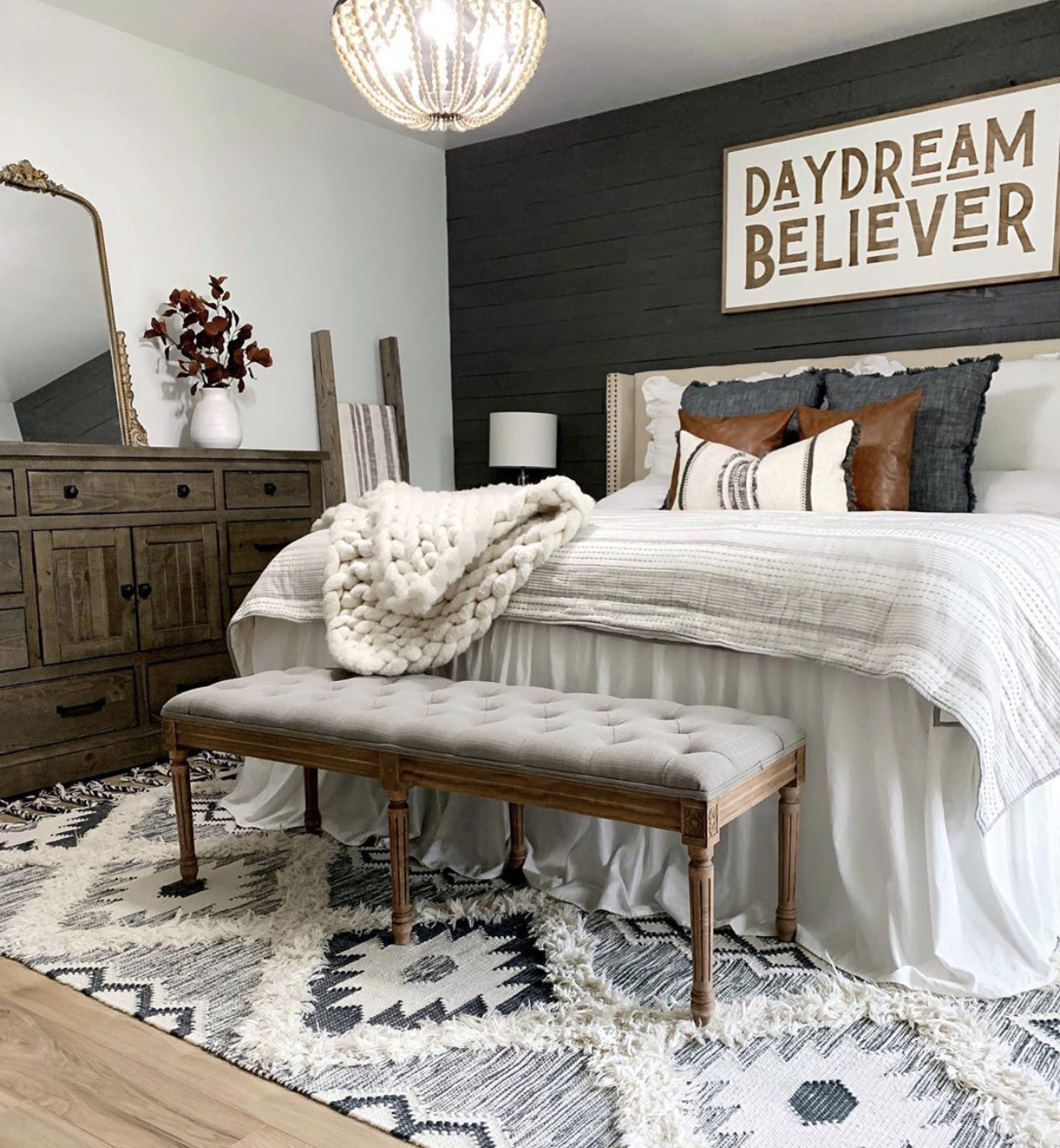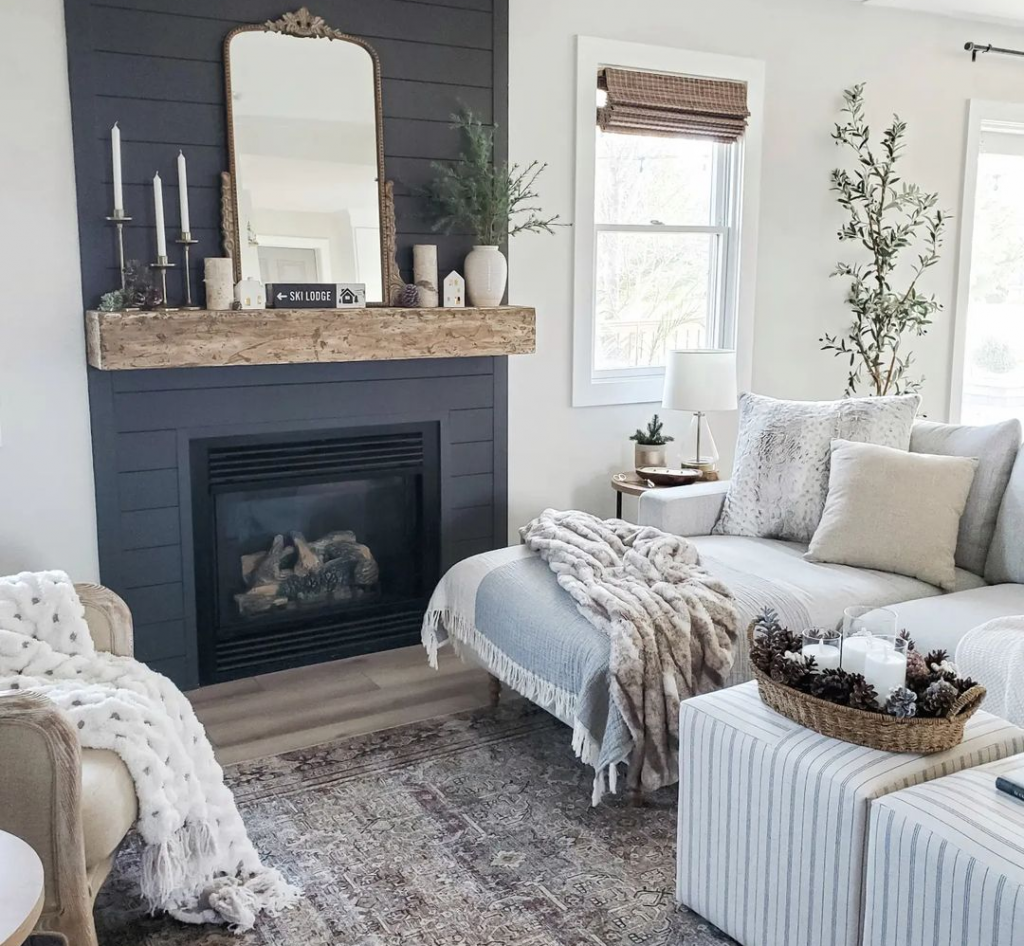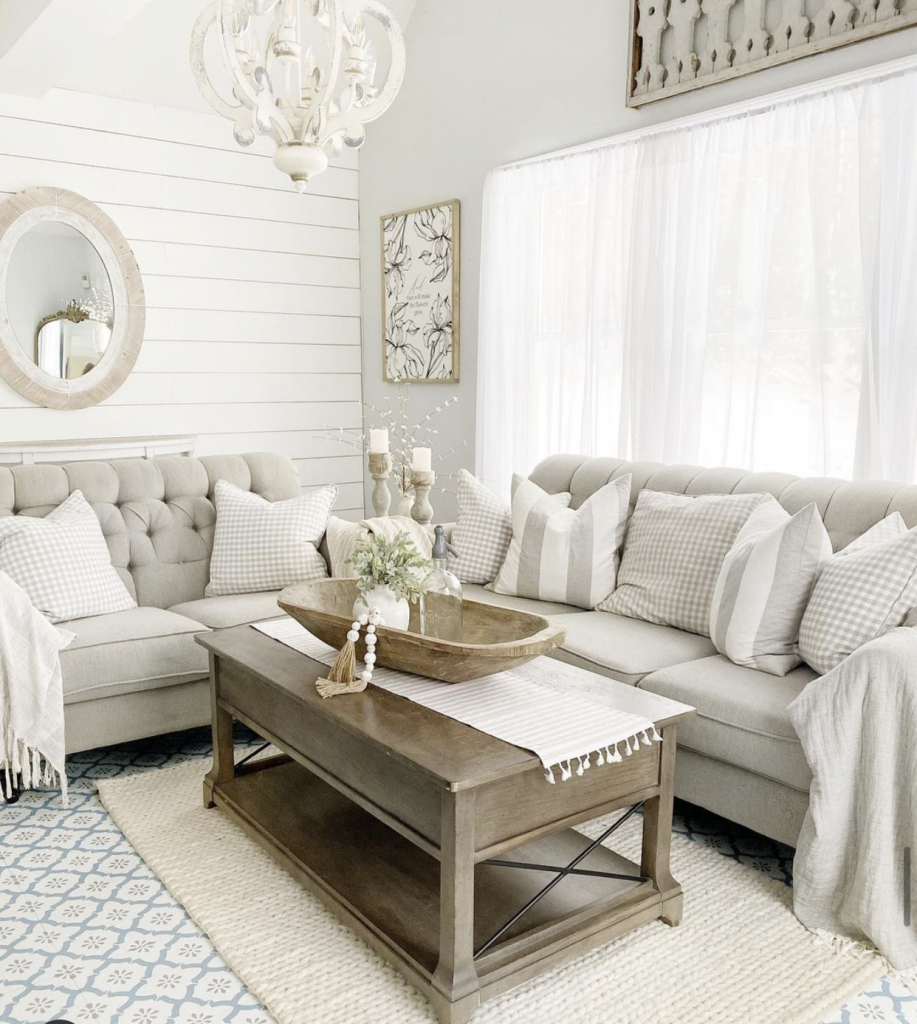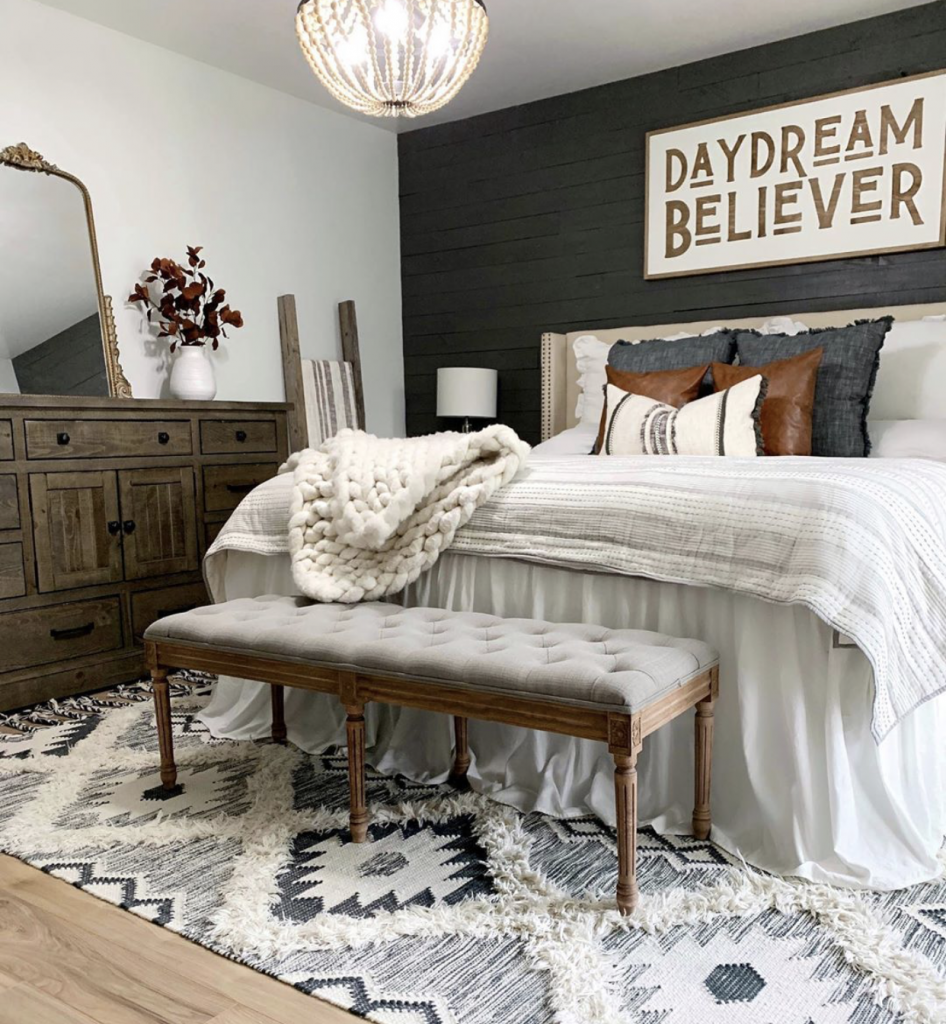Area Rugs 101: How to choose the best area rug for your space

An area rug is an important element of interior design that can add style, comfort, and practicality to any room in your home. Here are some reasons why having area rugs in your home is important:
- Comfort: Rugs add a layer of comfort and warmth to your floors, making them more comfortable to walk on, sit on, and stand on. This is especially important in rooms where you spend a lot of time, like living rooms and bedrooms.
- Sound insulation: Rugs can help reduce noise and echoes in a room by absorbing sound waves, making your home a more peaceful and relaxing place.
- Protection: Rugs can help protect your floors from scratches, dents, and other damage caused by furniture, foot traffic, and pets. This is particularly important in high-traffic areas like hallways and entryways.
- Style: Rugs come in a variety of colors, patterns, and textures, making them a versatile design element that can complement or enhance the decor of any room in your home.
- Define spaces: Rugs can be used to define different areas in a room, such as a sitting area or dining area, helping to create a cohesive and organized space.
- Safety: Rugs can provide a non-slip surface, reducing the risk of slips and falls, especially on hardwood or tile floors.
Overall, rugs are an important addition to any home, providing comfort, style, and practical benefits that can enhance the look and feel of your living space while protecting your floors and ensuring the safety of your family and guests.

Gold Mirror | Ornate Gleaming
Area Rug Size
Choosing the right size area rug for a space in your home can greatly enhance the overall look and feel of the room. Here are some general guidelines to help you choose the best-sized rug for your space:
- Consider the room’s function: The size of the rug you choose should depend on the room’s function. For example, in a living room, you may want a larger rug to anchor the seating area and tie the room together, while in a bedroom, a smaller rug might work well placed at the foot of the bed.
- Measure the space: Take accurate measurements of the room to determine the appropriate size rug. Make sure to take into account any furniture that will be placed on the rug, and leave enough space around the edges of the room for a balanced look.
- Choose a rug shape: The shape of the rug you choose should also depend on the room’s function and layout. For example, a rectangular rug might work well in a long, narrow living room, while a round rug might work better in a cozy bedroom.
- Consider the furniture placement: When choosing a rug size, consider the placement of furniture in the room. In a living room, you may want to make sure that the front legs of all furniture pieces are on the rug, while in a bedroom, you may only need a small rug placed at the foot of the bed.
- Experiment with different sizes: If you’re unsure about the size of rug to choose, consider experimenting with different sizes by using painter’s tape to mark out the area on the floor. This can give you a better sense of how different sizes will look in the space before making a purchase.
Overall, choosing the right size area rug for a space requires a balance between function, design, and personal preference. By taking accurate measurements and considering the room’s layout, furniture placement, and shape, you can choose a rug that will enhance the overall look and feel of your space.

Wooden European Scrollwork Chandelier
Area Rug Color
Choosing the best color area rug for your home is an important decision as it can greatly affect the overall look and feel of your space. Here are some tips to help you choose the right color rug for different spaces in your home:
- Consider the room’s existing color scheme: The color of the rug you choose should complement or enhance the existing color scheme of the room. If the room has neutral tones, you may want to add a rug with a pop of color to add interest. If the room has bold colors, a rug in a more neutral tone can help balance the space.
- Look for inspiration: If you’re unsure about what color rug to choose, look for inspiration in the room’s artwork, throw pillows, or other decorative accents. You can also look for inspiration in design magazines or online home decor websites.
- Consider the room’s function: The color of the rug you choose should also depend on the room’s function. For example, in a high traffic area like a hallway, you may want to choose a darker colored rug to help hide dirt and stains.
- Think about the mood you want to create: Different colors can evoke different moods in a room. For example, a cool blue or green rug can create a calming and relaxing atmosphere in a bedroom, while a bright red or orange rug can create a more energetic and lively atmosphere in a living room.
- Don’t be afraid to mix and match: You can also mix and match rug colors and patterns to create a more eclectic and interesting look. However, make sure that the colors and patterns complement each other and don’t clash.
Ultimately, choosing the best color area rug for your home requires a balance between personal preference, design, and function. By considering the room’s existing color scheme, the room’s function, the mood you want to create, and experimenting with different colors and patterns, you can choose a rug that adds warmth and style to your space.
Area Rug Pattern
Choosing the pattern of an area rug for your space is a key design decision that can greatly affect the overall look and feel of the room. Here are some tips to help you choose the right pattern for your area rug:
- Consider the existing decor: The pattern of the rug should complement or enhance the existing decor of the room. Look at the colors and patterns of the furniture, curtains, and accessories in the room and choose a rug pattern that complements or contrasts nicely with the existing decor.
- Think about the room’s purpose: The pattern of the rug should also reflect the room’s purpose. For example, a playful and colorful pattern may work well in a child’s playroom, while a more subtle and sophisticated pattern may work better in a formal living room.
- Consider the size of the room: The pattern of the rug should also take into account the size of the room. A large bold pattern may work well in a spacious room, while a smaller pattern may be better suited for a smaller room.
- Mix and match: Mixing and matching patterns can create a more eclectic and interesting look. However, make sure that the patterns complement each other and don’t clash.
- Stick to a theme: If you’re struggling to choose a pattern, consider sticking to a theme. For example, a nature-themed area rug with a floral or leafy pattern can work well in a room with a natural decor scheme.
Ultimately, choosing the pattern of an area rug requires a balance between personal preference, design, and function. By considering the existing decor, the room’s purpose, the size of the room, mixing and matching patterns, and sticking to a theme, you can choose a rug pattern that adds style and personality to your space.

Gold Mirror | Ornate Gleaming
Area Rug Material
There are many different types of area rug materials available, each with their own unique characteristics and benefits. Here are some of the most common types of rug materials and the best places in your home to use them:
- Wool: Wool is a durable and soft material that is naturally stain-resistant and flame-retardant. Wool rugs are great for high-traffic areas like living rooms and hallways, as well as bedrooms. They are also a good choice for homes with pets and children.
- Cotton: Cotton rugs are affordable, lightweight, and easy to clean, making them a popular choice for kitchens, bathrooms, and playrooms. They are also great for homes with allergies, as they are hypoallergenic and don’t shed fibers.
- Silk: Silk rugs are luxurious and soft, with a lustrous sheen that adds elegance to any room. They are best used in low-traffic areas like bedrooms, studies, or sitting rooms, as they are delicate and require special care.
- Jute: Jute is a natural fiber that is strong and durable, with a rough texture that adds a rustic feel to any room. Jute rugs work well in casual living spaces like family rooms, dens, and sunrooms.
- Synthetic fibers: Synthetic fibers like nylon and polyester are durable, easy to clean, and affordable. They are a great choice for high-traffic areas like entryways, mudrooms, and playrooms.
- Sisal: Sisal is a natural fiber that is strong and durable, with a textured look that adds warmth and depth to any room. Sisal rugs work well in high-traffic areas like living rooms and hallways.
- Cowhide: Cowhide rugs are unique and natural-looking, with a soft and durable texture that is easy to clean. They are a great choice for living rooms, bedrooms, and home offices.
Ultimately, the best area rug material for your home depends on your personal preferences, lifestyle, and budget. Consider the amount of foot traffic in the room, the level of comfort you desire, and the decor style of your home when choosing a rug material.